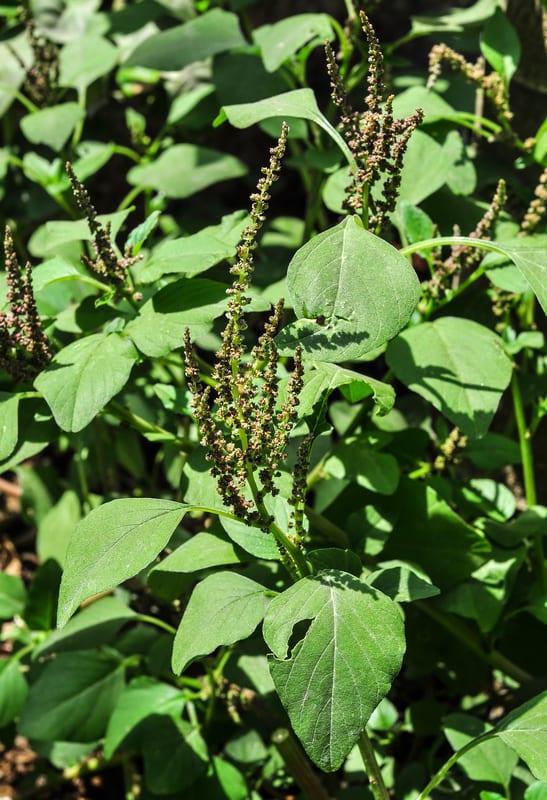Green Amaranth, Slender Amaranth, Wild Amaranth, Pigweed
Amaranthus viridis

🌿 Morphology
🌞 Growing conditions
🌍 Origin and family
🌾 Uses
Warning: Despite the care taken in writing this sheet, it is essential to cross-reference sources before using or consuming any plant. When in doubt, consult a qualified professional
Permaculture uses
The leaves are edible as a spinach substitute, rich in vitamins and minerals. Seeds are also edible and can be ground into flour. It acts as a dynamic accumulator, drawing nutrients from the soil and making them available to other plants. It can also be used as a green manure. Some cultivars are selected for larger leaves or seeds.
Permapeople description
Amaranthus viridis is a cosmopolitan species in the botanical family Amaranthaceae and is also known as slender amaranth or green amaranth.
Botanical description
Amaranthus viridis is an annual herbaceous plant belonging to the Amaranthaceae family. It typically grows to a height of 0.3 to 0.8 meters. The stems are erect or ascending, often branched. The leaves are ovate to lanceolate, with entire margins and are arranged alternately on the stem. The inflorescence is a terminal or axillary panicle of small, green flowers. The fruit is a small, indehiscent utricle containing a single, dark brown seed. The plant is characterized by its green coloration and is highly adaptable, thriving in disturbed habitats.
Companion planting
Generally considered a beneficial companion plant due to its nutrient accumulation properties. However, it can become weedy and compete with other crops if not managed properly. Its tolerance of poor soils can make it a good pioneer species. Avoid planting near crops sensitive to competition from fast-growing annuals.
Propagation methods
Propagation is primarily through seeds. Seeds can be directly sown in the garden after the last frost or started indoors and transplanted. It self-seeds readily. No special seed treatment is typically needed.
History and traditions
Amaranthus viridis has been used traditionally as a food source and for medicinal purposes in various cultures. In some regions, it is considered a famine food, while in others it is valued for its nutritional properties. It has been used in traditional medicine to treat various ailments, including inflammation and digestive issues. Specific historical traditions are not as well documented as for other Amaranthus species like A. cruentus.
Usage calendar
Sowing: Spring (after last frost). Germination: Spring/Summer. Harvesting (leaves): Summer/Autumn. Harvesting (seeds): Autumn. Flowering: Summer/Autumn.
